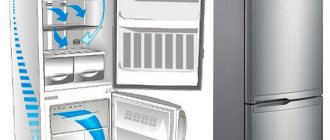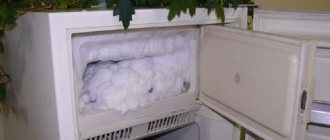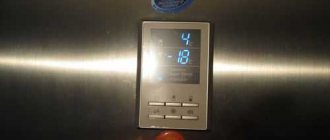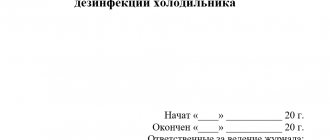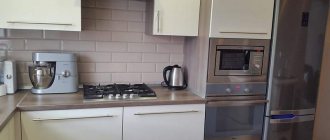Preparing for cleaning at home
Before you start cleaning the No frost refrigerator, you need to prepare it. This process includes the following steps:
The temperature regulator in the device is set to zero;- a rag is placed next to the door;
- disconnect equipment from the power supply;
- remove all food from the refrigerator;
- remove shelves, drawers, pallets, grates - all elements that can be detached are best washed separately;
- leave the freezer open and wait for the ice to disappear;
- accumulated water is collected with a sponge.
To assess the thickness of the ice layer, you can remove the back wall of the freezer. If it is thick, this indicates either improper operation of the device or a malfunction in its operation.
How to clean a refrigerator
The washing process includes several stages.
Preparing for cleaning
First of all, reset the temperature regulator, and only then disconnect the equipment from the network. Then empty the contents and check the expiration dates. Feel free to throw spoiled food in the trash. Remove all removable items from the chamber - shelves, drawers, trays, grates, side niches - they will need to be washed separately. Wait until all the ice disappears from the walls.
Algorithm of actions
- The cleaning process should begin from the top of the chamber, gradually moving towards the bottom. During work, it is permissible to use any detergents that are designed to care for plastic surfaces.
- Wash the refrigerator from all sides. Once the camera is clean, work on the inside of the door. Pay special attention to hard-to-reach places, including the rubber seal.
- Wipe all walls with a dry cotton cloth and leave the equipment open until completely dry.
Wash all removable parts in soapy water, rinse with clean water and dry.
What formulations can be used?
To clean the refrigerator, you can use both available detergents and specialized household chemicals. The most important rule is that the chosen composition must be liquid.
Under no circumstances should the following methods be used:
- Powders. Hard particles will leave scratches on the surface of the device, which in the future will become a source of unpleasant odor. Moisture accumulates in such microcracks, becoming an ideal place for microbes to multiply.
- Caustic compounds. They can damage the surface of the device and seals.
- Products with a strong odor or substances that are toxic to the body. Such compositions are prohibited for use on surfaces in contact with food.
To treat surfaces, you can safely use soda, vinegar, hydrogen peroxide, liquid dishwashing detergent, and soap. A solution is prepared from the listed substances, which is used to treat the refrigerator and all elements.
Another option is to use store-bought products designed to care for household appliances.
Refrigerator cleaning products should not include:
- chlorine,
- alkalis,
- highly concentrated acids,
- acetone or solvents.
To remove dirt, use only soft cloths or sponges.
Elimination of unpleasant odors
To avoid the appearance of unpleasant odors in the refrigerator, you must follow these rules:
- Place only fresh food in the refrigerator. After all, cold helps maintain the freshness of food, but is not able to return it if it has already been lost. Stale, bad-smelling products not only transfer their smell to other products, but also contribute to their spoilage;
- smoked meats, fish, herring and other strong-smelling products must be carefully packed in polyethylene or parchment so that they do not transfer their odors to other products stored in the refrigerator. Milk, sour cream, butter, cream, cream, etc. are especially easily perceived by foreign odors;
- Medicines that are recommended to be kept cold should be kept in closed glass or ceramic containers.
Many modern refrigerator models are equipped with special odor absorber filters. There are three types of such filters . The main component of the first type of filter is activated carbon, a well-known absorbent. Filters of the second type are a gel-like substance placed in a blister, and filters of the third type contain carbon along with the gel. Despite their different shapes, all filters perform one task - absorb odors present in the refrigerator.
All odor absorber filters are designed for three months of continuous use . Absorber filters protect the refrigerator from unpleasant odors, but do not deprive stored products of their natural taste and smell. The air passing through such filters is cleaned of various microorganisms that contribute to rapid spoilage of food. They are designed for three months of continuous use. After this period they should be replaced . The replacement process does not present any difficulties. You just need to remove the old filter and install a new one in its place.
You can make a carbon filter yourself. To do this, you need to take a plastic jar with a lid and make many small holes in its walls. Then the jar is filled with crushed charcoal and placed in the refrigerator. From time to time, the coal must be heated in a frying pan or replaced with fresher one.
You can combat unpleasant odors inside the refrigerator using various available means:
- to remove strong odors, wash the interior surfaces of the refrigerator with a solution of water and wine vinegar;
- put the black bread cut into pieces on the shelves and close the refrigerator for the day;
- put two lemon halves or a gauze bag with rice or sugar in the refrigerator;
- arrange tea bags, apples, herbs (thyme, basil, celery, tarragon, juniper) on the shelves;
- put an open jar of ground coffee in the refrigerator;
- pour baking soda into a small container and place in the refrigerator;
- Vanilla extract poured on a saucer will help quickly remove the unpleasant odor.
How to quickly wash the inside of the device without defrosting it?
Despite the fact that the Know Frost refrigerator assumes automatic defrosting, this procedure must be carried out manually at least once a year . A thorough cleaning includes high-quality cleaning of all sections, including the freezer.
If not much time has passed since the last defrosting, and the refrigerator needs cleaning, you can do without defrosting.
However, you will have to act quickly:
- the refrigerator is disconnected from the network;
- the freezer is left closed;
- quickly remove, wash and dry all shelves;
- remove dirt from the internal walls of the device;
- wash the outside of the refrigerator;
- carefully collect all the moisture - for this it is better to use paper towels;
- install components in place, put products on shelves.
You need to take care of the cleaning product in advance. If store-bought formulations are immediately ready for use, then improvised solutions require manufacturing.
Available means
In every home there are compounds that can be used to care for the refrigerator:
Baking soda is the #1 refrigerator cleaner.
It is not used in its pure form; a solution is prepared on its basis. For 1 liter of water you will need 2 tablespoons of soda. After treating all surfaces, the solution must be removed with a clean damp cloth.- Laundry soap . It is rubbed into shavings, dissolved in warm water and all contaminated areas are treated. The product needs to be washed off.
- Vinegar. To prepare the solution you will need 2 tablespoons of 9% vinegar and 1 liter of water. Wipe all surfaces with the resulting composition. To provide a deodorizing effect, you can leave it on the surface for 15 minutes and then rinse off.
The listed compositions can be combined. For particularly difficult areas, use a mixture of vinegar and soda.
Household chemicals
You can clean the Know Frost refrigerator using specialized household chemicals, which are introduced specifically for these purposes. Such products are sold in retail stores, as well as in online markets.
In addition, refrigerator manufacturers are developing formulations designed specifically for their brands. They claim that such chemistry is safe and most effective. However, branded liquids are expensive and are rarely found on the open market.
How often should you clean your No Frost refrigerator?
Equipment manufacturers advise disconnecting it from the voltage and giving it a rest at least once a year.
If you notice that the device has begun to cool poorly or is malfunctioning, then it is better not to wait for a specific time, but to defrost it immediately. Therefore, answering the question: “How often should you defrost a No Frost refrigerator,” we can say: as soon as such a need arises. If you see that a thick layer of ice has formed on the walls of the equipment, this indicates that defrosting is necessary on the same day.
TOP best
The best products for cleaning No Frost refrigerators:
Gel Clean Home
A universal composition that is gentle on various surfaces. Advantages:
- Available in liquid form,
- easy to apply on a sponge,
- has a pleasant smell,
- Effectively removes even stubborn stains.
The product contains hydrogen peroxide and active oxygen ions. Bottle volume – 200 ml. Price – 93 rubles.
Sano Refrigerator Cleaner Spray
Liquid with a pleasant smell, suitable for cleaning interior and exterior surfaces . A convenient sprayer allows you to economically dose the composition. Package volume – 750 ml. Price – 460 rubles.
Luxus Professional
Spray with a pleasant mint aroma. It can be used to care for know frost refrigerators, as well as freezers.
The composition not only perfectly cleans all surfaces, but also eliminates unpleasant odors. Volume – 500 ml. Price – 154 rubles.
How to get rid of the smell?
To get rid of the unpleasant odor coming from the No Frost refrigerator, you need to follow these recommendations:
- completely defrost the device;
- rinse the drain hole;
- remove and wash the tray;
- check all products for spoilage, get rid of those that emit an unpleasant odor;
- wash the refrigerator with products that have antibacterial properties: hydrogen peroxide, vinegar solution, a solution of water and vodka, taken in equal proportions;
- Dry the refrigerator and leave it to ventilate for 12 hours.
After following the proposed algorithm of actions, the smell should disappear. To consolidate the result, you can use a regular lemon, cutting it into slices and placing it on the shelves of the refrigerator for 2-3 days.
You will find a lot of useful information on how to remove odors from the refrigerator using folk remedies here, and using household chemicals here.
No Frost refrigerator: how to wash and put away
“No Frost” translates as “no frost,” however, despite the specificity of the system’s name, users recommend defrosting the unit twice a year in order to be able to carry out general cleaning.
Defrosting is carried out by temporarily disconnecting the refrigerator from the network, since appliances of this type are capable of defrosting automatically.
Attention! Unpleasant odors can accumulate in refrigerators. To get rid of them, you need to completely defrost and ventilate the unit.
When defrosting the refrigerator, you must follow some rules:
- Do not defrost in hot weather;
- If the unit has two cooling circuits, then only one chamber is defrosted;
- If there is only one cooling circuit, then by turning off the device, the thermostat is set to zero;
- After turning off the power and removing all products, the door is left open;
- It is necessary to wash the refrigerator completely, not excluding the back surface;
- Complete cleaning can only begin when the inner surface has warmed to room temperature;
- The ventilation compartments are cleaned first, using cotton swabs;
- Then clean the shelves and pockets in the door, and other elements located inside;
- At the end of cleaning, all surfaces are wiped dry;
- You can turn on the device only after all surfaces are completely dry.
Attention! The rear surface, which accumulates the largest amount of dust, must be thoroughly cleaned to reduce the energy consumption of the device.
What products can be used and what cannot be used
Self-prepared solutions are considered the best for cleaning the internal surfaces of the refrigerator. For example, a simple solution of laundry soap or dishwashing detergent that has been tested over the years.
Soda solution is considered effective and safe for internal surfaces. To prepare it, take 2 teaspoons of soda per 1 liter of water. With the help of such a solution and an ordinary sponge, all elements are not only easily cleaned, but also disinfected. In addition, a vinegar solution is used for washing, using equal parts of water and vinegar.
Attention! Vinegar solution is contraindicated for cleaning rubber seals! If this element has lost its elasticity, you can try rubbing it with olive oil.
The refrigerator tends to accumulate excess moisture, which contributes to the formation of mold. To get rid of a dangerous enemy, you can use an aqueous solution of “Whiteness”, at the rate of one part of the cleanser to ten parts of water. The most stubborn mold stains are pre-moistened and left for 10 minutes.
Attention! The use of chemicals for cleaning internal surfaces is prohibited, as aggressive substances can form an invisible residue on the products.
Therefore, the inside of the refrigerator can only be washed with food-safe commercial products that do not damage the integrity of the surfaces.
How to keep your refrigerator tidy
The exterior of the refrigerator should be cleaned at least once a week. In addition, you should regularly review products for expiring dates. Spoiled food and contaminants must be removed in a timely manner.
If you store prepared dishes in tightly closed containers, and store the products themselves according to the rules, in compliance with the principles of commodity proximity, then you can avoid the occurrence of an unpleasant odor. Some food categories should absolutely not coexist. For example, do not store open cooked food next to raw meat, fish or eggs.
What not to do and why?
Rules that must not be broken:
It is not recommended to use vinegar to wash the seal. A highly concentrated solution is especially dangerous. It can cause the rubber to lose its elasticity.- If you do not plan to defrost the refrigerator, then you should not open the freezer while cleaning.
- Do not attempt to scrape off dried food debris with a knife, blade or other sharp instrument.
- Before any washing of the refrigerator (with or without defrosting), it must be disconnected from the power supply to avoid electric shock.
- Before placing the glass shelf under running hot water, you need to wait until it warms up. Otherwise the part may burst. Boiling water should not be used.
Helpful information
Tips that will come in handy when cleaning your No Frost refrigerator:
- If ice has accumulated inside the freezer, do not remove it with a wire brush or try to speed up the defrosting process with a hairdryer. Such actions can lead to damage to household appliances.
- It is convenient to clean the holes on the fan grille with cotton swabs soaked in a cleaning solution.
- When defrosting the appliance, you need to pay attention to the drain hole located on the back wall of the appliance. It is cleaned with a brush, and then washed with a syringe (without a needle).
- When cleaning the refrigerator, you need to move from top to bottom so as not to dirty the already washed shelves.
- After washing, you need to let the device air out, leaving it open for at least 1-2 hours.
You will find useful tips and tricks for cleaning your refrigerator in this section.
Caring for a conventional refrigerator (drip defrost system)
In addition to what is described above, a refrigerator without a No Frost system must be defrosted at least twice a month by natural thawing. It is strictly forbidden to chip off the ice with sharp objects in order to speed up the defrosting process. This may damage the evaporator walls. If you need to quickly defrost the device, it is advisable to use warm water and a soft cloth or place a vessel with warm water in the chamber.
It is also necessary to monitor the humidity level inside the freezer and the refrigerator as a whole. Excess moisture can damage the refrigerator's coating, spoil the taste of food, and cause unpleasant odors. To prevent this from happening, tightly close containers with liquid foods, store fruits and vegetables in their packaging, and periodically clean the special drainage channel.
